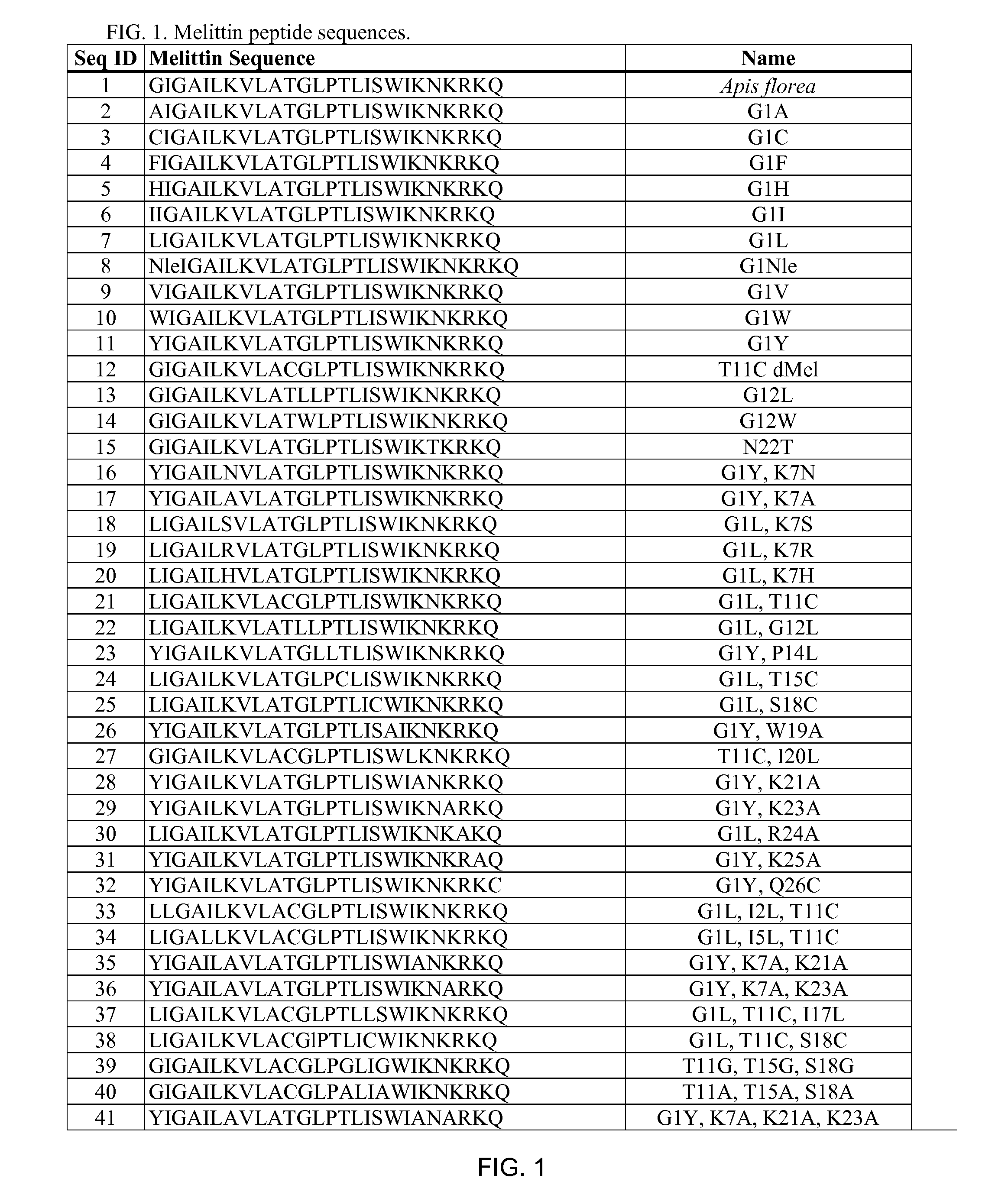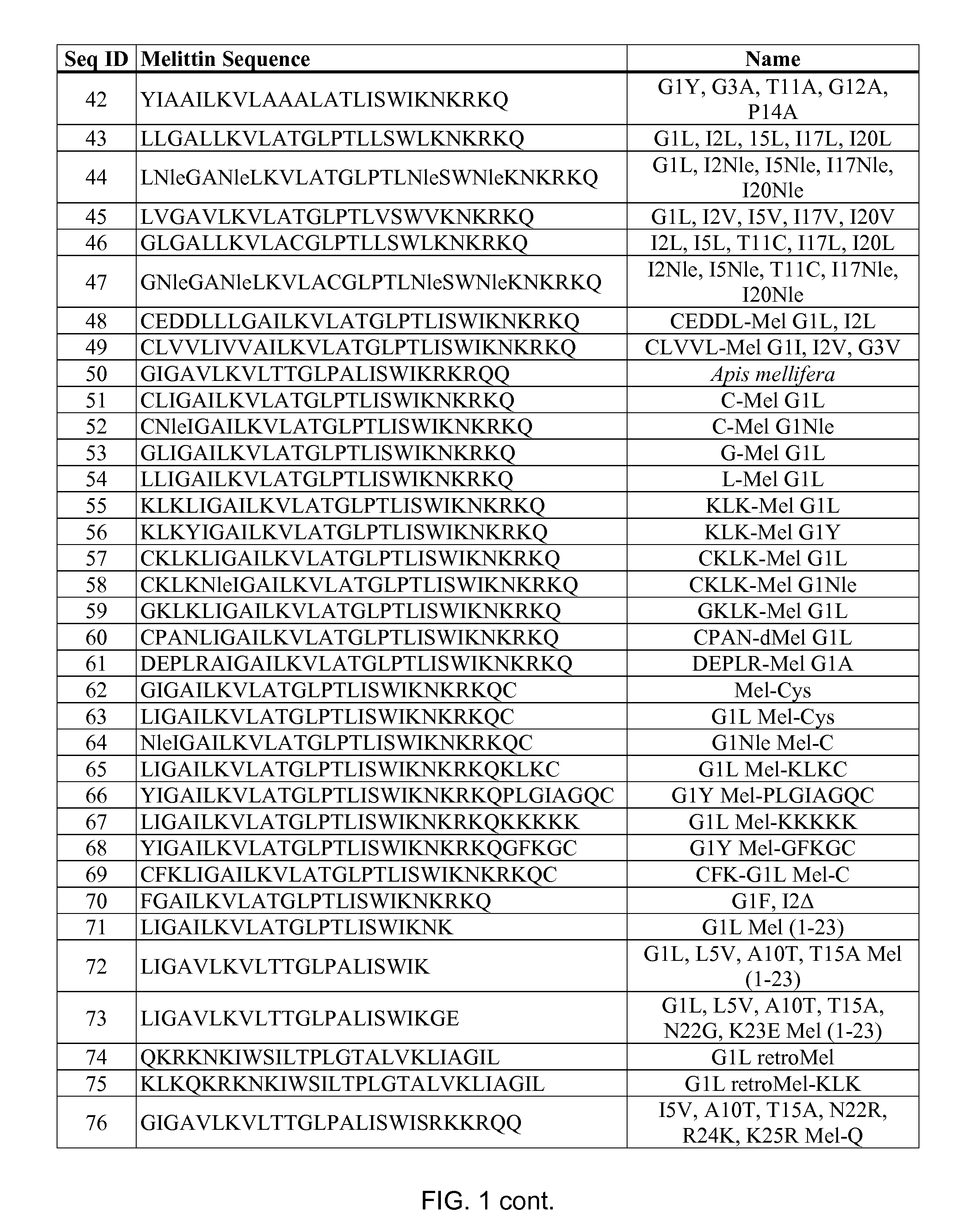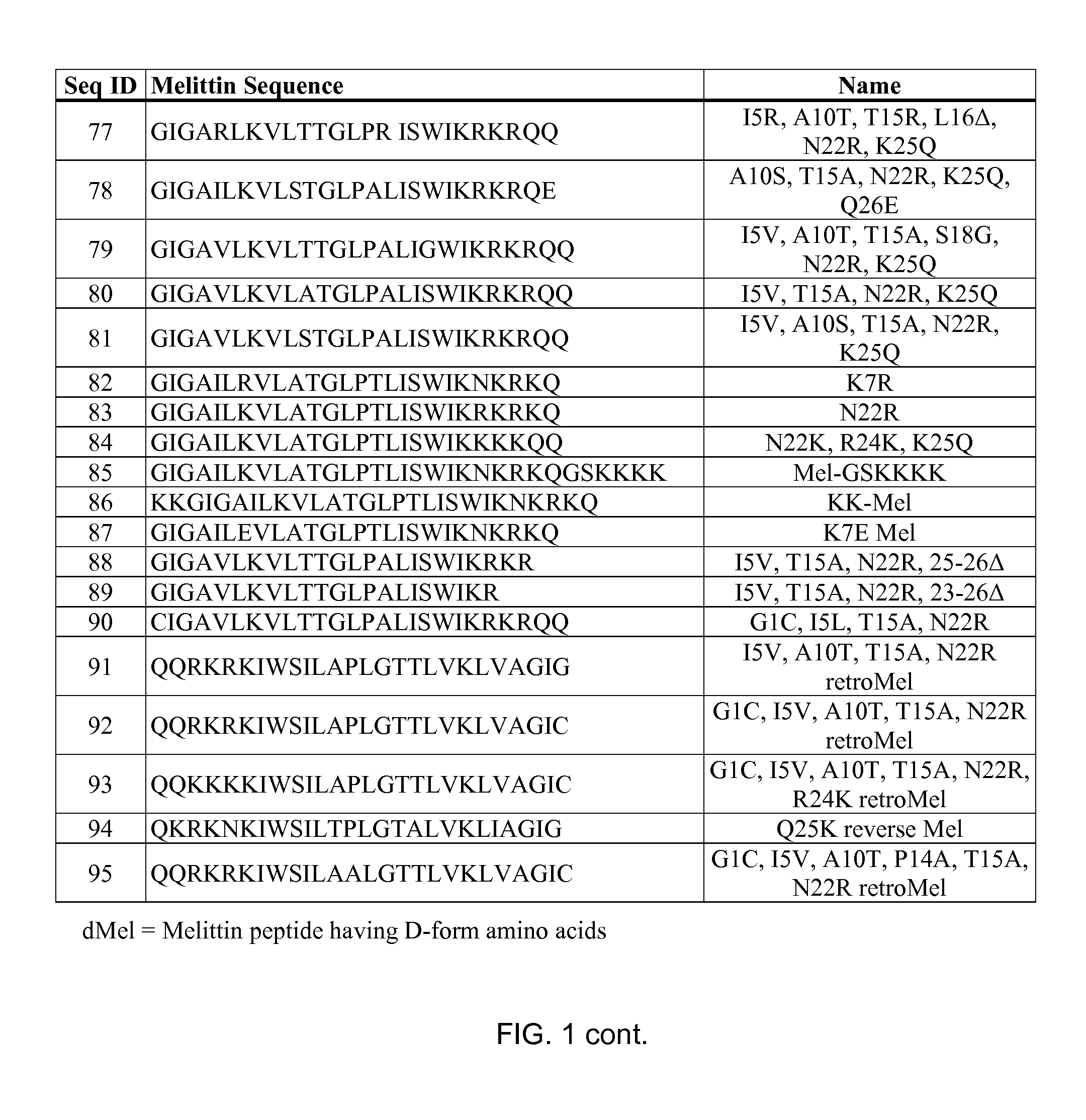Peptide-based in vivo siRNA delivery system
a delivery system and sirna technology, applied in the field of peptide-based in vivo sirna delivery system, can solve the problems of large hydrophilic polymers used in antisense, rnai, gene therapy, and restricting the direct diffusion of nucleic acids through the cell membrane, and the large nucleic acid dose required by these methods is impractical, and achieves beneficial levels of expression, inhibits endogenous gene expression, and effectively knocks down gen
- Summary
- Abstract
- Description
- Claims
- Application Information
AI Technical Summary
Benefits of technology
Problems solved by technology
Method used
Image
Examples
example 1
Melittin Synthesis.
[0158]All melittin peptides were made using peptide synthesis techniques standard in the art. Suitable melittin peptides can be all L-form amino acids, all D-form amino acids (inverso). Independently of L or D form, the melittin peptide sequence can be reversed (retro).
example 2
Melittin Modification
Amino Terminal Modification of Melittin Derivatives.
[0159]Solutions of CKLK-Melittin (20 mg / ml), TCEP-HCl (28.7 mg / ml, 100 mM), and MES-Na (21.7 mg / ml, 100 mM) were prepared in dH2O. In a 20 ml scintillation vial, CKLK-Melittin (0.030 mmol, 5 ml) was reacted with 1.7 molar equivalents TCEP-HCl (0.05 μmol, 0.51 ml) and left to stir at room temperature for 30 min. MES-Na (2 ml) and Water (1.88 ml) were then added in amounts to yield final concentrations of 10 mg / ml Melittin and 20 mM MES-Na. The pH was checked and adjusted to pH 6.5-7. A solution of NAG-PEG2-Br (100 mg / ml) was prepared in dH2O, NAG-PEG2-Br (4.75 eq, 0.142 mmol, 0.61 ml) was added, and the solution was left to stir at room temperature for 48 h.
[0160]Alternatively, in a 20 ml scintillation vial, Cys-Melittin (0.006 mmol, 1 ml) was reacted with 1.7 molar equivalents TCEP-HCl (0.010 mmol, 100 μl) and left to stir at room temperature for 30 min. MES-Na (400 μl) and water (390 μl) were added in amounts ...
example 3
Masking Agents Synthesis
A. pH Labile Masking Agents: Steric Stabilizer CDM-PEG and Targeting Group CDM-NAG (N-acetyl galactosamine) Syntheses.
[0168]To a solution of CDM (300 mg, 0.16 mmol) in 50 mL methylene chloride was added oxalyl chloride (2 g, 10 wt. eq.) and dimethylformamide (5 μl). The reaction was allowed to proceed overnight, after which the excess oxalyl chloride and methylene chloride were removed by rotary evaporation to yield the CDM acid chloride. The acid chloride was dissolved in 1 mL of methylene chloride. To this solution was added 1.1 molar equivalents polyethylene glycol monomethyl ether (MW average 550) for CDM-PEG or (aminoethoxy)ethoxy-2-(acetylamino)-2-deoxy-β-D-galactopyranoside (i.e. amino bisethoxyl-ethyl NAG) for CDM-NAG, and pyridine (200 μA, 1.5 eq) in 10 mL of methylene chloride. The solution was then stirred 1.5 h. The solvent was then removed and the resulting solid was dissolved into 5 mL of water and purified using reverse-phase HPLC using a 0.1% ...
PUM
| Property | Measurement | Unit |
|---|---|---|
| diameter | aaaaa | aaaaa |
| diameter | aaaaa | aaaaa |
| half life | aaaaa | aaaaa |
Abstract
Description
Claims
Application Information
 Login to View More
Login to View More - R&D
- Intellectual Property
- Life Sciences
- Materials
- Tech Scout
- Unparalleled Data Quality
- Higher Quality Content
- 60% Fewer Hallucinations
Browse by: Latest US Patents, China's latest patents, Technical Efficacy Thesaurus, Application Domain, Technology Topic, Popular Technical Reports.
© 2025 PatSnap. All rights reserved.Legal|Privacy policy|Modern Slavery Act Transparency Statement|Sitemap|About US| Contact US: help@patsnap.com



